Continuing Conducive Environmental Conditions for Diseases in Soybean
Prevalent Seedling Diseases Early planting conditions for soybeans were cool, and wet, which has lead to numerous reports of stand …



El inglés es el idioma de control de esta página. En la medida en que haya algún conflicto entre la traducción al inglés y la traducción, el inglés prevalece.
Al hacer clic en el enlace de traducción se activa un servicio de traducción gratuito para convertir la página al español. Al igual que con cualquier traducción por Internet, la conversión no es sensible al contexto y puede que no traduzca el texto en su significado original. NC State Extension no garantiza la exactitud del texto traducido. Por favor, tenga en cuenta que algunas aplicaciones y/o servicios pueden no funcionar como se espera cuando se traducen.
Inglês é o idioma de controle desta página. Na medida que haja algum conflito entre o texto original em Inglês e a tradução, o Inglês prevalece.
Ao clicar no link de tradução, um serviço gratuito de tradução será ativado para converter a página para o Português. Como em qualquer tradução pela internet, a conversão não é sensivel ao contexto e pode não ocorrer a tradução para o significado orginal. O serviço de Extensão da Carolina do Norte (NC State Extension) não garante a exatidão do texto traduzido. Por favor, observe que algumas funções ou serviços podem não funcionar como esperado após a tradução.
English is the controlling language of this page. To the extent there is any conflict between the English text and the translation, English controls.
Clicking on the translation link activates a free translation service to convert the page to Spanish. As with any Internet translation, the conversion is not context-sensitive and may not translate the text to its original meaning. NC State Extension does not guarantee the accuracy of the translated text. Please note that some applications and/or services may not function as expected when translated.
Collapse ▲Prevalent Seedling Diseases Early planting conditions for soybeans were cool, and wet, which has lead to numerous reports of stand …
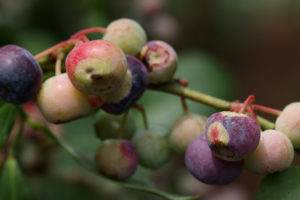
I recently visited a small Chatham County blueberry farm and found some of the bushes were infected with Exobasidium, …
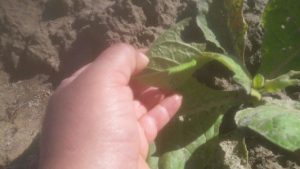
This is the ninth weekly TSWV and tobacco thrips risk assessment update. Third generation flights have now occurred at all …
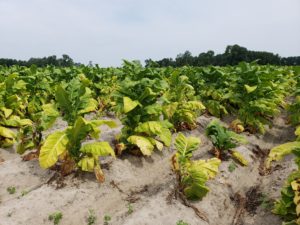
This is the sixth of our weekly TSWV and tobacco thrips risk assessment updates. Third generation flights have now …

This is the third of our weekly TSWV and tobacco thrips risk assessment updates. Cool weather has continued to …

April 9, 2020- As upside down as the world seems right now, the 2020 tobacco season continues to march forward. …

The wheel bug, Arilus cristatus, is North Carolina’s largest assassin bug. It gets its name from the prominent spiny …

Managing tomato spotted wilt virus (TSWV) in North Carolina tobacco requires both pre transplant and post transplant decisions, which …
Julie Hayworth-Perman | NC State University Homegrown Putting off that home remodel or waiting until the right time to add …

Kim Kaplan | 10/3/2019 | USDA ARS A map identifying the areas suitable for establishment of the spotted lanternfly (SLF) …

The fall armyworm is a chronic pest in the Southeast and can cause severe damage to grass and forage …

As red imported fire ants continue to spread across North Carolina and the country, you may be a bit …
Sandra Avant USDA ARS | 8/21/2019 | Via Morning AgClips Marek’s disease—a highly contagious viral disease caused by a herpesvirus—is …
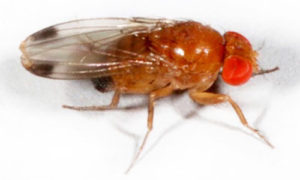
Cornell University | MorningAgClips via EurekaAlert! With New York state’s $20 million berry industry entering peak season, an invasive fruit fly …
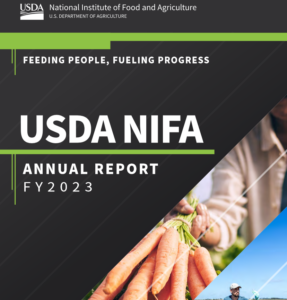
Curious to know about agriculture and food research currently being funded by the National Institute of Food and Agriculture? Check …

Dr. Robert Orpet | 6/25/2019 | Via Entomology Today The European earwig (Forficula auricularia) may be difficult to appreciate …
As more people move to the urban centers of North Carolina, consumers lose previously close connections with where their …

Andrew Porterfield | 4/29/2019 | EntomologyToday Since its accidental arrival in New Jersey in 1916, the Japanese beetle (Popillia japonica) …

Wood et al. at Michigan State University While many scientists are focused on the decline of honey bees, relatively few …

USDA | 4/1/2019 | Via Morning AgClips Invasive Plant Pest & Disease Awareness Month WASHINGTON — Spring is a popular time …
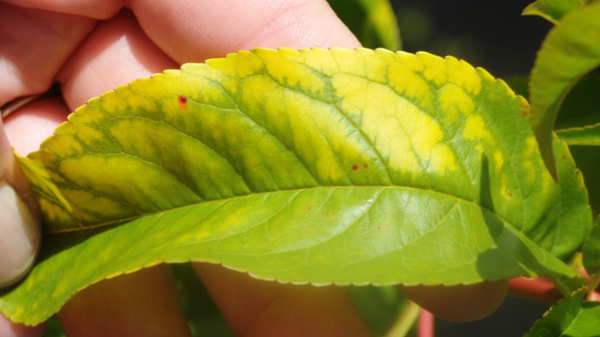
This factsheet describes the symptoms of a photosystem II (PS II) inhibitor herbicide injury.

Similar to zoysiagrass mites, bermudagrass (Eriophyes cynodoniensis) mites are tiny, worm-like arachnids present in the …

This publication covers the identification, life cycles and treatment of several species of insects, such …

This vegetable pathology factsheet describes the identification and treatment of anthracnose of pepper.

This publication describes the invasive Callery pear species, its offspring, and how it can harm …
This factsheet describes the biology of the cane lace bug or bamboo lace bug, Leptodictya …

This factsheet describes the biology of the banded sphinx moth or lesser vine sphinx, Eumorpha …

This factsheet describes the biology of the elm-grass root aphid, Tetraneura ulmi, and provides residential …